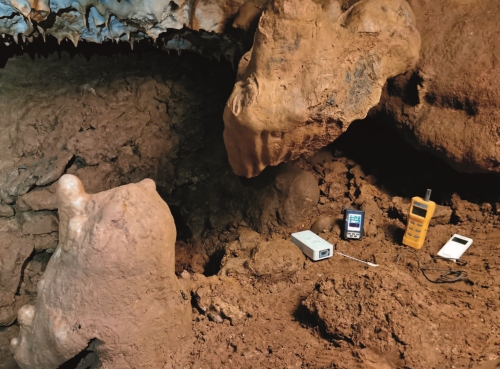Concentrations and dynamics of carbon dioxide, radioactivity and radon in two caves of Italian Classical Karst (Municipalities of Sagrado and Savogna d’Isonzo)
DOI:
https://doi.org/10.3986/ac.v52i1.10719Keywords:
Casali Neri Cave, Due Piani Cave, Italian Classical Karst, carbon dioxide, radioactivity, radonAbstract
A 13-month monitoring was carried out in two caves that open up in the north-western sector of the Classical Karst (Gorizia Karst): Antro Casali Neri and Grotta Due Piani. In both, ß + γ radioactivity, radon and CO2 have a seasonal pattern, with maximums in summer and minimums in winter, even if their trends are somewhat different, due to the different morphological and thermal conditions. The increases begin when the outside temperature becomes higher than that of the caves and vice versa, decrease is recorded when outside temperature is below the cave temperature. The more modest daily variations of radon, on the other hand, are evident when its concentration is low. Sometimes they are related to meteorological variations or day/night rhythms, but, in other cases, they have no clearly identifiable causes. In Casali Neri cave the maximum radon activity was 50161 Bq/m3, while the CO2 concentration went off the instrument's scale (> 9999 ppm) only in the first days of August 2021. The highest radioactivity value was also recorded in this cave with 0.85 μSv/h (average of 8 minutes of recording), with peaks up to 1.05 μSv/h. In Due Piani cave, on the other hand, the radon activity was lower, with a maximum of 22138 Bq/m3, however, the CO2 values went off the scale from July to the first days of October 2021. In both cases, in the warm months, radon and CO2 appear to come mainly from the fractured rock of epikarstic zone. Further accumulations can then form in points with poor ventilation. Furthermore, research has shown that high concentrations of these two gases are not only typical of large or deep caves, but also of modest and easily accessible caves.
Downloads

Downloads
Published
How to Cite
Issue
Section
License

This work is licensed under a Creative Commons Attribution 4.0 International License.
Authors guarantee that the work is their own original creation and does not infringe any statutory or common-law copyright or any proprietary right of any third party. In case of claims by third parties, authors commit their self to defend the interests of the publisher, and shall cover any potential costs.
More in: Submission chapter




